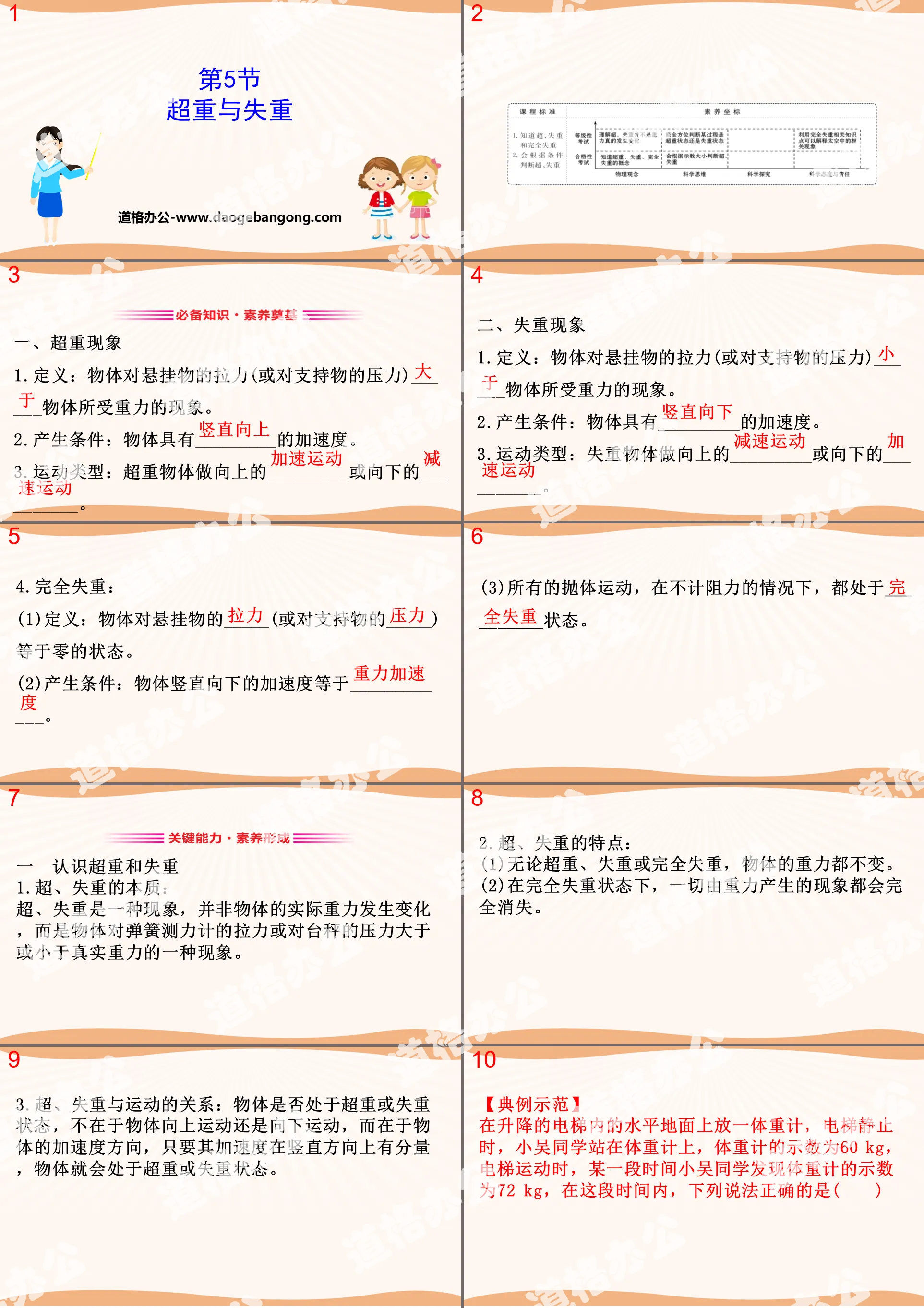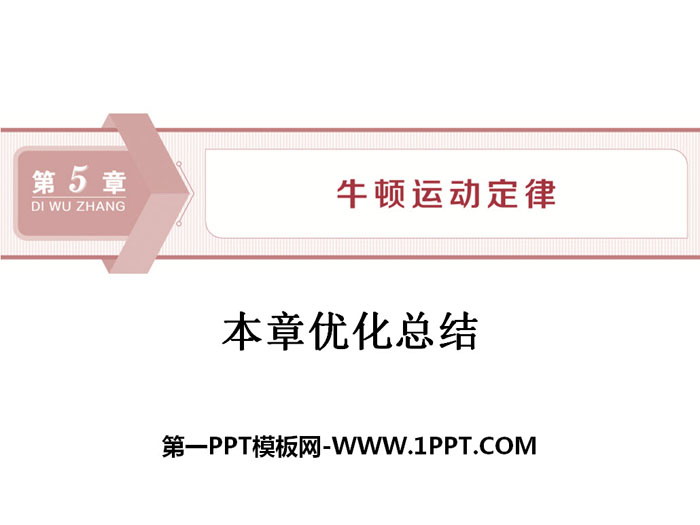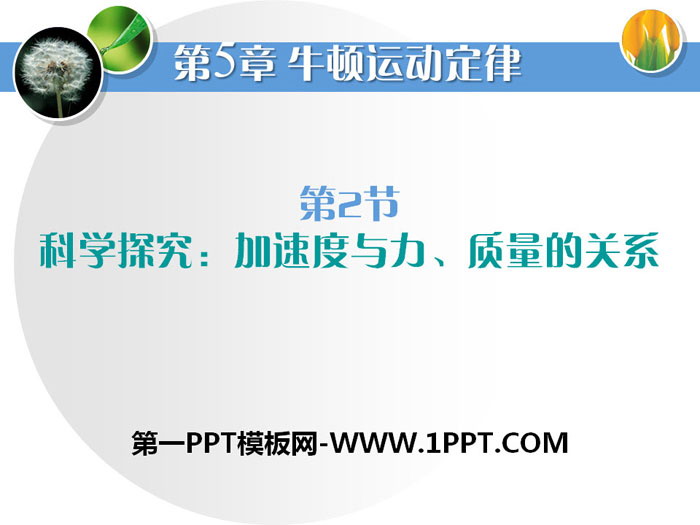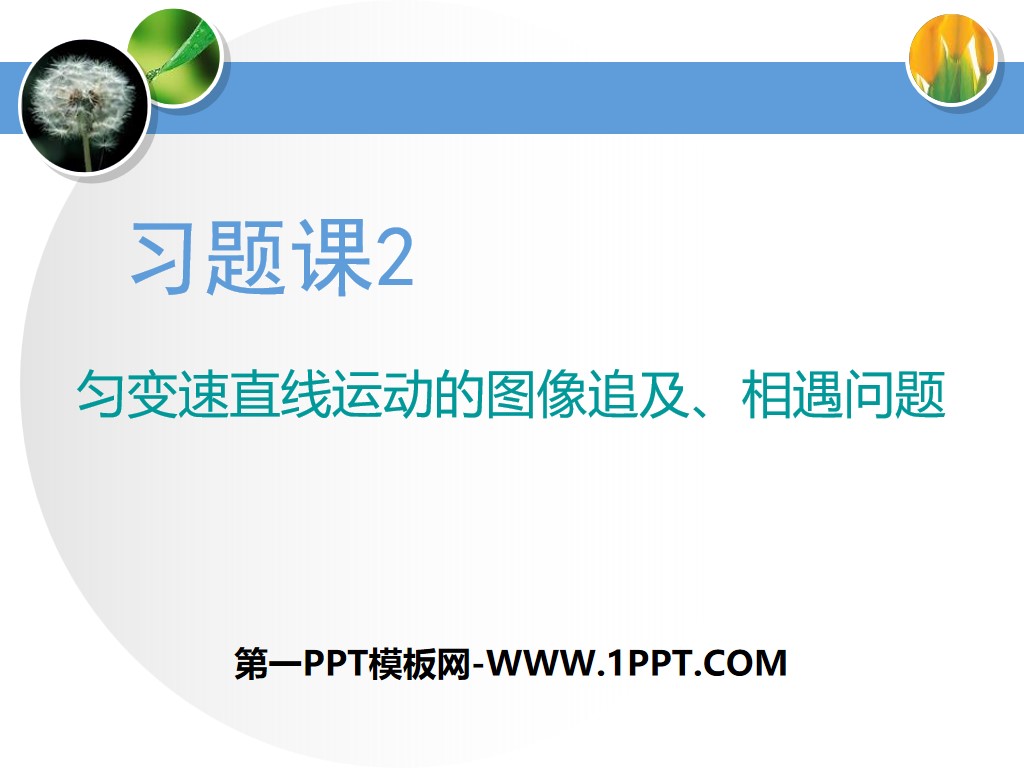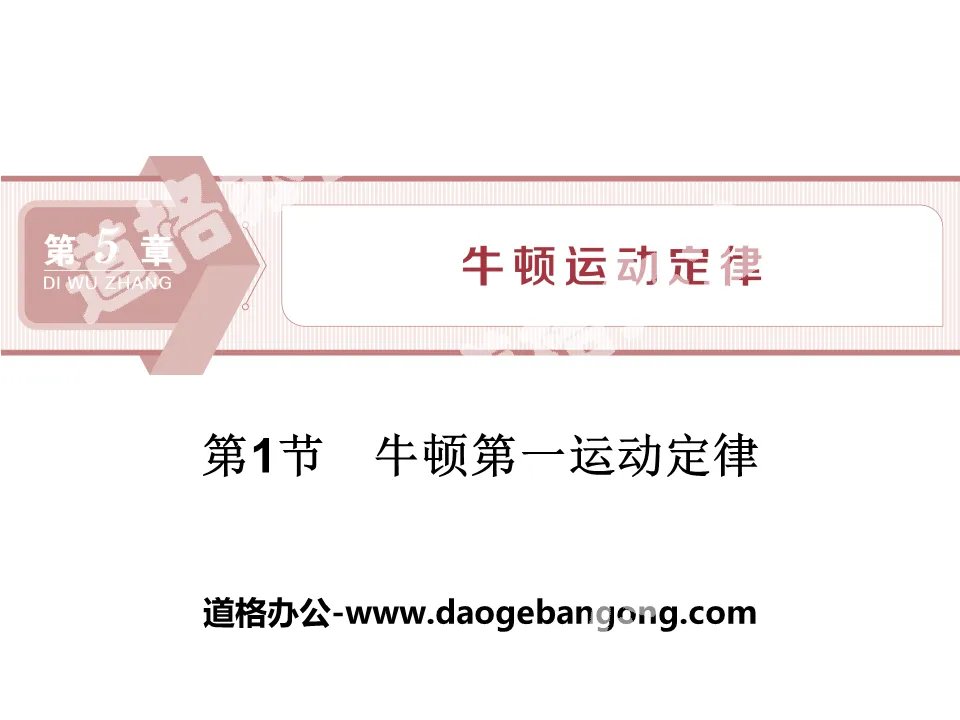
| Category | Format | Size |
|---|---|---|
| Lu Ke Edition High School Physics Compulsory Course One | pptx | 6 MB |
Description
"Overweight and Weightlessness" Newton's Laws of Motion PPT teaching courseware
Part 1: Essential knowledge and foundation of literacy
1. Overweight phenomenon
1. Definition: The pulling force of an object on a suspended object (or the pressure on a supporting object) ______ the gravity exerted by an object.
2. Conditions for production: The object has _________ acceleration.
3. Type of exercise: Do upward _________ or downward __________ with super heavy objects.
2. Weightlessness phenomenon
1. Definition: The pulling force of an object on a suspended object (or the pressure on a supporting object) ______ the gravity exerted by an object.
2. Conditions for production: The object has _________ acceleration.
3. Type of motion: The weightless object moves upward ________ or downward __________.
4. Complete weightlessness:
(1) Definition: A state in which the object’s _____ to the suspended object (or _____ to the support) is equal to zero.
(2) Conditions for production: The vertical downward acceleration of an object is equal to ____________.
(3) All projectile motion, regardless of resistance, is in a __________ state.
Overweight and weightless PPT, part 2: Key capabilities and literacy formation
1. Understanding overweight and weightlessness
1. The essence of super and weightlessness:
Super-weightlessness is a phenomenon, which is not a change in the actual gravity of the object, but a phenomenon in which the pulling force of the object on the spring dynamometer or the pressure on the platform scale is greater or less than the true gravity.
2. Characteristics of super and weightlessness:
(1) Regardless of whether it is overweight, weightless or completely weightless, the gravity of an object remains unchanged.
(2) In a state of complete weightlessness, all phenomena caused by gravity will completely disappear.
3. The relationship between hypergravity, weightlessness and motion: Whether an object is in a state of hypergravity or weightlessness does not depend on whether the object moves upward or downward, but on the direction of the object's acceleration. As long as its acceleration has a component in the vertical direction, the object will be in a state of hypergravity or weightlessness. Overweight or weightlessness.
[Typical example demonstration]
Place a scale on the level ground in an elevator. When the elevator is stationary, Xiao Wu stands on the scale. The scale reads 60 kg. When the elevator is moving, at some point Xiao Wu notices that the scale The indication is 72 kg. During this period of time, the correct statement below is the Century Golden List Guide Number ()
A. The gravity experienced by Xiao Wu has become stronger.
B. Xiao Wu’s pressure on the scale is greater than the scale’s support for him
C. The direction of the elevator’s acceleration must be vertically upward.
D. The direction of movement of the elevator must be vertically upward.
[Analysis] Choose C. At the same latitude on the earth's surface, gravity has nothing to do with people's movement and whether they are acted upon by other forces. Option A is incorrect; according to Newton's third law, pressure and support force are a pair of action and reaction forces. Option B is incorrect; the weight scale The indication 72 kg is greater than 60 kg, indicating that the direction of the resultant force is upward. According to Newton's second law, the acceleration direction is upward. Option C is correct. If the acceleration is upward, the elevator may accelerate upward or decelerate downward. Option D is incorrect.
【Regular method】Methods for judging excess and weight loss
(1) From the perspective of force:
Overweight: The upward pulling force (or supporting force) on the object is greater than gravity;
Weightlessness: The upward pulling force (or supporting force) on an object is less than gravity;
Complete weightlessness: the upward pulling force (or supporting force) on the object is zero.
(2) From the perspective of acceleration:
When overweight, an object has vertical upward acceleration;
When weightless, an object has vertical downward acceleration;
When completely weightless, an object has a vertical downward acceleration equal to the acceleration due to gravity.
【Motif question】
1. (Multiple choices) If Xiao Wu changes the situation in [Typical Example Demonstration] to the inclined escalator as shown in the picture, he stands on the escalator and experiences the escalator from stationary to slow acceleration to uniform motion. process, then among these two processes, which of the following statements is correct ()
A. When accelerating, the direction of the resultant force of gravity and support force on Xiao Wu is vertically upward.
B. The direction of the escalator’s support for Xiao Wu is always vertically upward.
C. The friction force of the escalator on Xiao Wu always points to the upper right
D. The direction of the escalator's force on Xiao Wu first points to the upper right, and then vertically upward (physical concept)
[Analysis] Choose A, B, or D. Taking Xiao Wu as the research object, when accelerating, Xiao Wu is in an overweight state. In the vertical direction, the supporting force is greater than the gravity. The combined force of the two is vertically upward, and A is correct. Regardless of whether the escalator is accelerating or moving at a constant speed, the supporting force is perpendicular to the contact surface. Points to Xiao Wu, B is correct; when the escalator accelerates slowly, the friction force of the escalator on Xiao Wu is horizontally to the right, and the support force on Xiao Wu is vertically upward. The resultant force of these two forces points to the upper right. At constant speed, there is no friction force on Xiao Wu. , it only has vertical and upward support for Xiao Wu, so C is wrong and D is correct.
2. Comparison and application of overweight and weightlessness phenomena
1. Comparison between overweight and weightlessness:
2. Application of overweight and weightlessness:
(1) The acceleration direction of the object's movement can be judged from the motion situation, and then the object is judged to be in an overweight or weightless state based on the acceleration direction, and then the relationship between the apparent weight and the actual weight of the object can be judged.
(2) The relationship between the apparent weight and actual weight of an object can be used to determine whether the object is in a state of overweight or weightlessness. The magnitude and direction of the object's acceleration can be determined from the overweight and weightlessness. The movement of the object can be determined from the acceleration.
【Think·Discussion】
Scenario: An object is on a scale in a helicopter. The gravity measured by the scale is greater than the actual gravity of the object. Does the helicopter necessarily move upward?
Discussion: (1) If the "gravity" measured by the platform scale is greater than the actual gravity of the object, what state does it indicate that the object is in? Which direction is the acceleration? (scientific inquiry)
Tip: The object is in a super-gravity state and the direction of acceleration is upward.
(2) Can the direction of movement of the helicopter be determined? (scientific inquiry)
Tip: No, just know that the acceleration direction is upward. The helicopter may accelerate upward or decelerate downward.
Keywords: Free download of PPT courseware of Lu Ke version of high school physics compulsory course I, PPT download of overgravity and weightlessness, PPT download of Newton's laws of motion, .PPT format;
For more information about the "Newton's Laws of Motion Overweight and Weightlessness" PPT courseware, please click the Newton's Laws of Motion ppt Overweight and Weightlessness ppt tag.
"End of Chapter Review Lesson" Newton's Laws of Motion PPT:
"End of Chapter Review Lesson" Newton's Laws of Motion PPT Part 1 Content: Consolidation Level Knowledge Integration [Core Quick Filling] 1. The relationship between force and motion: Force can _____ the motion state of an object. 2. Newton's first law: All objects remain at rest or __________..
"Optimization Summary of this Chapter" Newton's Laws of Motion PPT:
"Optimization Summary of this Chapter" Newton's Laws of Motion PPT integrates and improves the connected body problem of dynamics 1. Connected body: A whole composed of two or more interacting objects with the same acceleration is called a connected body. For example, if several objects are stacked together or squeezed side by side...
"Application of Newton's Laws of Motion" Newton's Laws of Motion PPT:
"Application of Newton's Laws of Motion" Newton's Laws of Motion PPT Part One Content: High-frequency test point - Calculation of instantaneous acceleration "Knowledge Comprehensive" Newton's second law is the instantaneous action law of force. Acceleration and force are generated at the same time. Change and disappear at the same time. Instant solution...
File Info
Update Time: 2024-07-06
This template belongs to Physics courseware Lu Ke Edition High School Physics Compulsory Course One industry PPT template
"Overweight and Weightlessness" Newton's Laws of Motion PPT teaching courseware Simple campus recruitment activity planning plan summary enterprise and institution recruitment publicity lecture PPT template is a general PPT template for business post competition provided by the manuscript PPT, simple campus recruitment activity planning plan summary enterprise and institution recruitment promotion Lecture PPT template, you can edit and modify the text and pictures in the source file by downloading the source file. If you want more exquisite business PPT templates, you can come to grid resource. Doug resource PPT, massive PPT template slide material download, we only make high-quality PPT templates!
Tips: If you open the template and feel that it is not suitable for all your needs, you can search for related content "Overweight and Weightlessness" Newton's Laws of Motion PPT teaching courseware is enough.
How to use the Windows system template
Directly decompress the file and use it with office or wps
How to use the Mac system template
Directly decompress the file and use it Office or wps can be used
Related reading
For more detailed PPT-related tutorials and font tutorials, you can view: Click to see
How to create a high-quality technological sense PPT? 4 ways to share the bottom of the box
Notice
Do not download in WeChat, Zhihu, QQ, built-in browsers, please use mobile browsers to download! If you are a mobile phone user, please download it on your computer!
1. The manuscript PPT is only for study and reference, please delete it 24 hours after downloading.
2. If the resource involves your legitimate rights and interests, delete it immediately.
3. Contact information: service@daogebangong.com
"Overweight and Weightlessness" Newton's Laws of Motion PPT teaching courseware, due to usage restrictions, it is only for personal study and reference use. For commercial use, please go to the relevant official website for authorization.
(Personal non-commercial use refers to the use of this font to complete the display of personal works, including but not limited to the design of personal papers, resumes, etc.)
Preview
